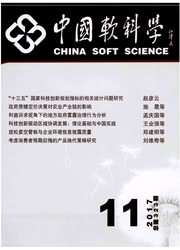

 中文摘要:
中文摘要:
为应对气候变化,各国纷纷采取相应的碳减排策略,制定减排目标,而减排目标的实现主要是依靠科技进步和结构优化,强制减排要付出较大的经济代价。本文通过建立减排成本评估的投入产出-计量优化组合模型,研究了我国减排成本曲线的动态变化,在国际比较的基础上,得到发展中国家减排的宏观经济损失更大的结论,提出了实现我国碳强度减排目标的非等量递增减排路径。
 英文摘要:
英文摘要:
Many countries adopt corresponding carbon emission reduction strategies to response to climate change and realize emission reduction target.Though science and technology progress is the final solution of CO2 emission reduction in long term,some mandatory measures have to be taken in short term to mitigate the influence of CO2 emissions.All these measures will cause cost to the economy,so called in this paper the macroeconomic cost of CO2 emission abatement.Based on the input-output-econometrics optimal assembly model analysis and empirical results,this paper concludes that the economic loss on developing countries are greater than that on developed countries resulting from emission reduction measures.A non-equal increasing reduction strategy is a more optimal solution to realize the emission reduction target in 2020 in China with a lower economic cost.
 同期刊论文项目
同期刊论文项目
 同项目期刊论文
同项目期刊论文
 Optimal acquisition strategy for China';s strategic petroleum reserve: A cost estimation study throu
Optimal acquisition strategy for China';s strategic petroleum reserve: A cost estimation study throu Analysis of Global CCS Technology, Regulations and Its Potential for Emission Reduction with Focus o
Analysis of Global CCS Technology, Regulations and Its Potential for Emission Reduction with Focus o Does generation form influence environmental efficiency performance? An analysis of China';s power s
Does generation form influence environmental efficiency performance? An analysis of China';s power s System Analysis Approach for Identification of the Factors Driving Crude Oil Prices after the Global
System Analysis Approach for Identification of the Factors Driving Crude Oil Prices after the Global 期刊信息
期刊信息
